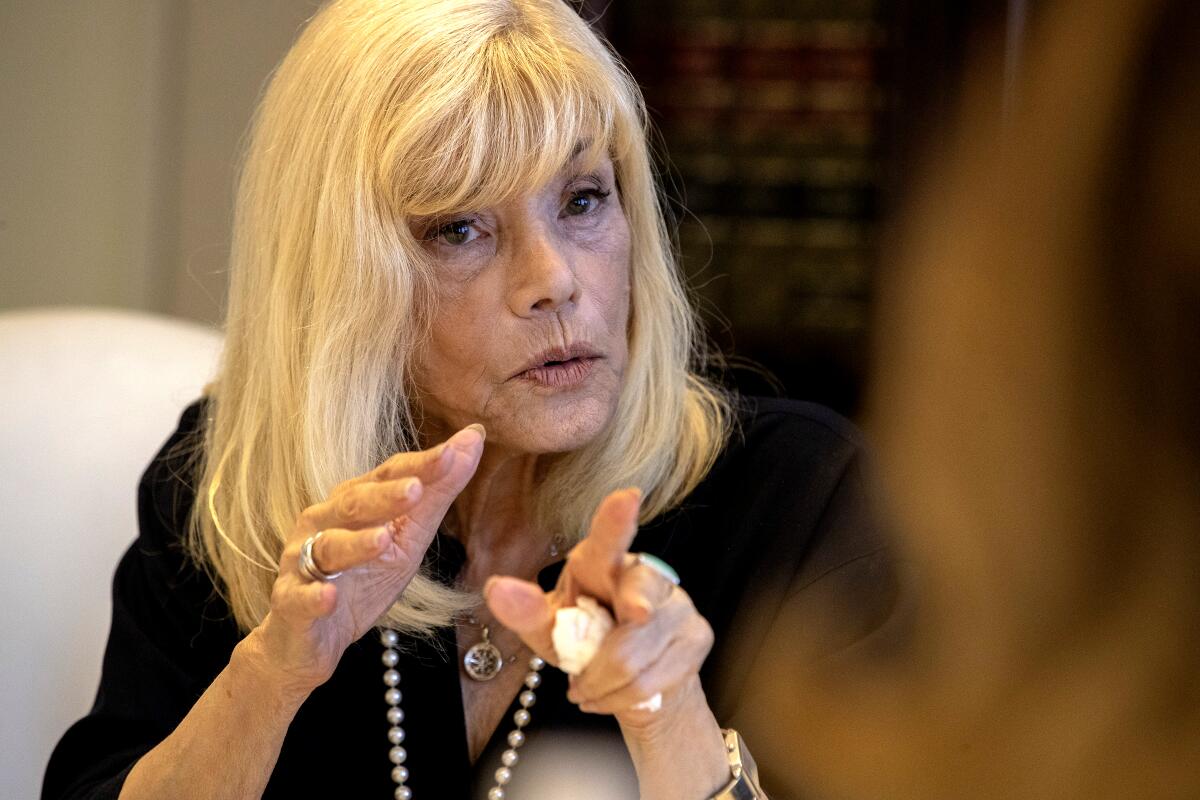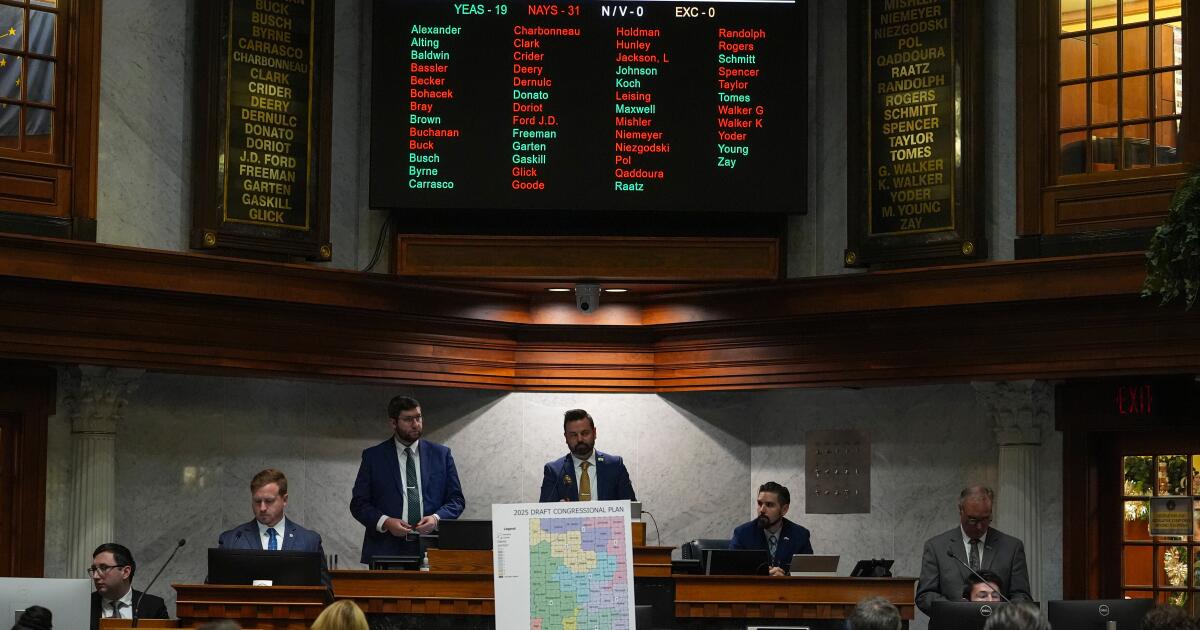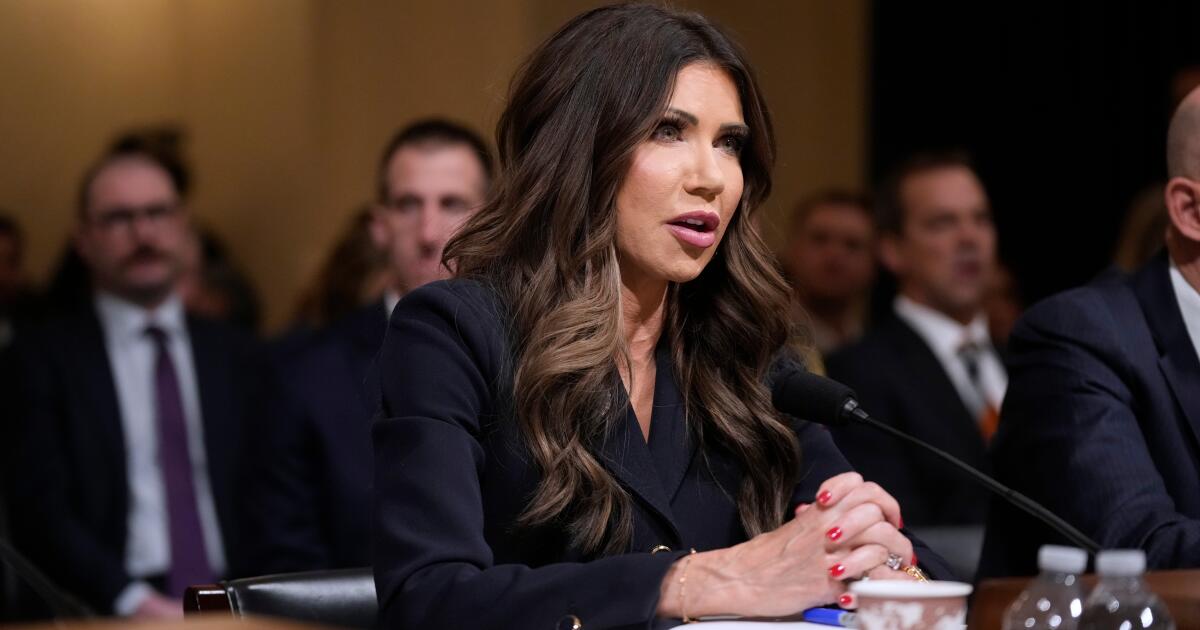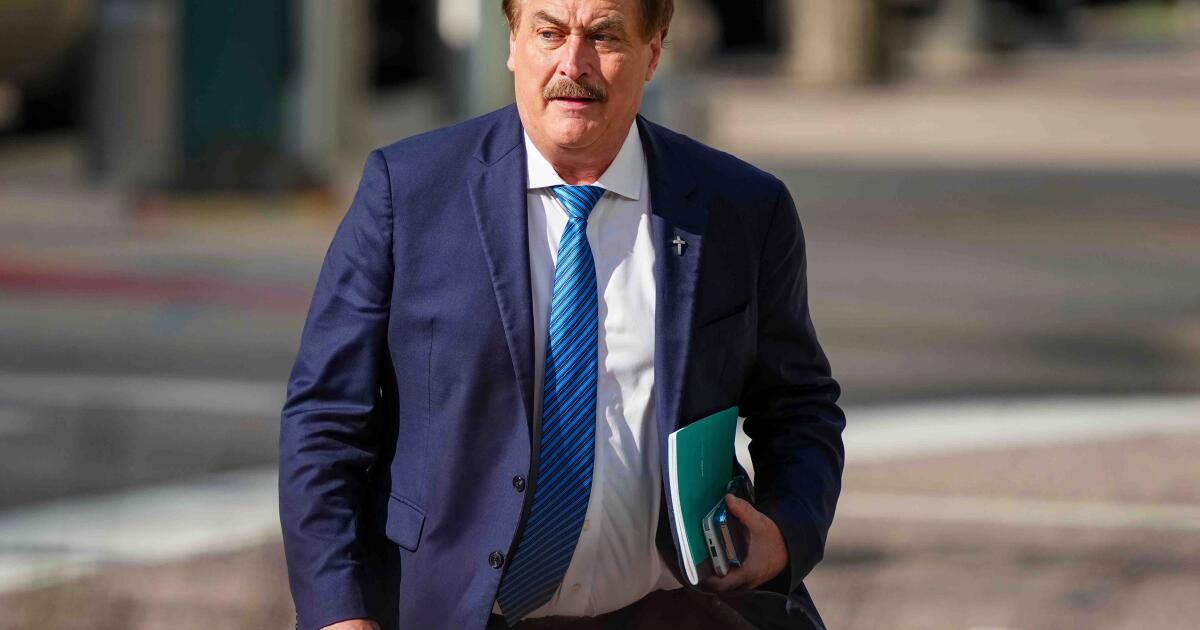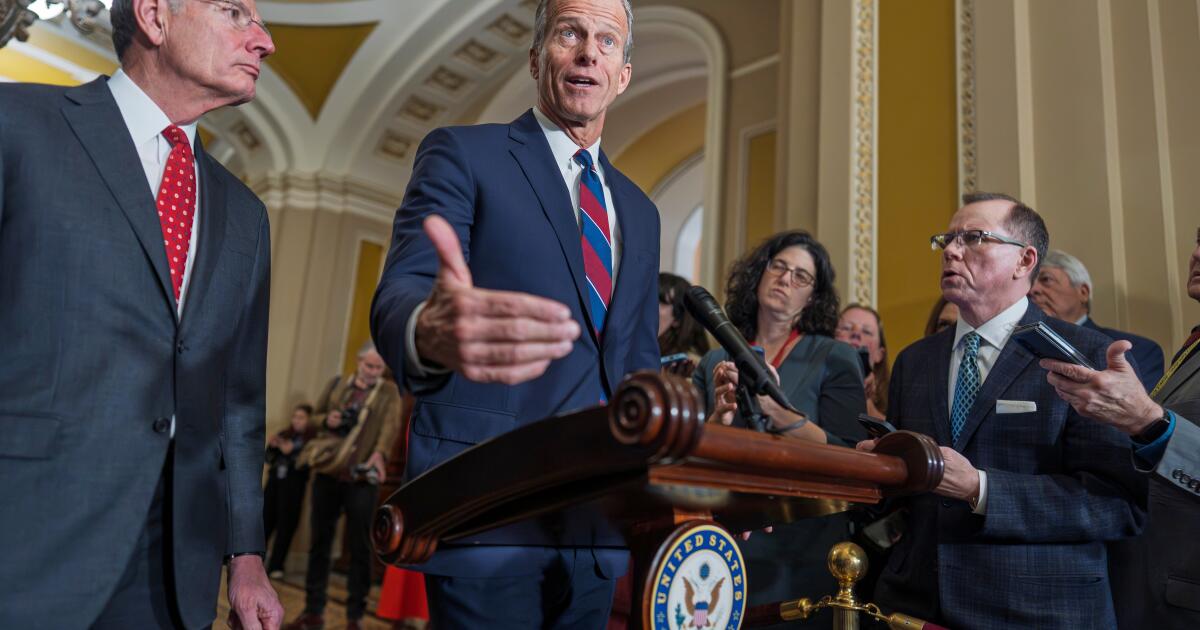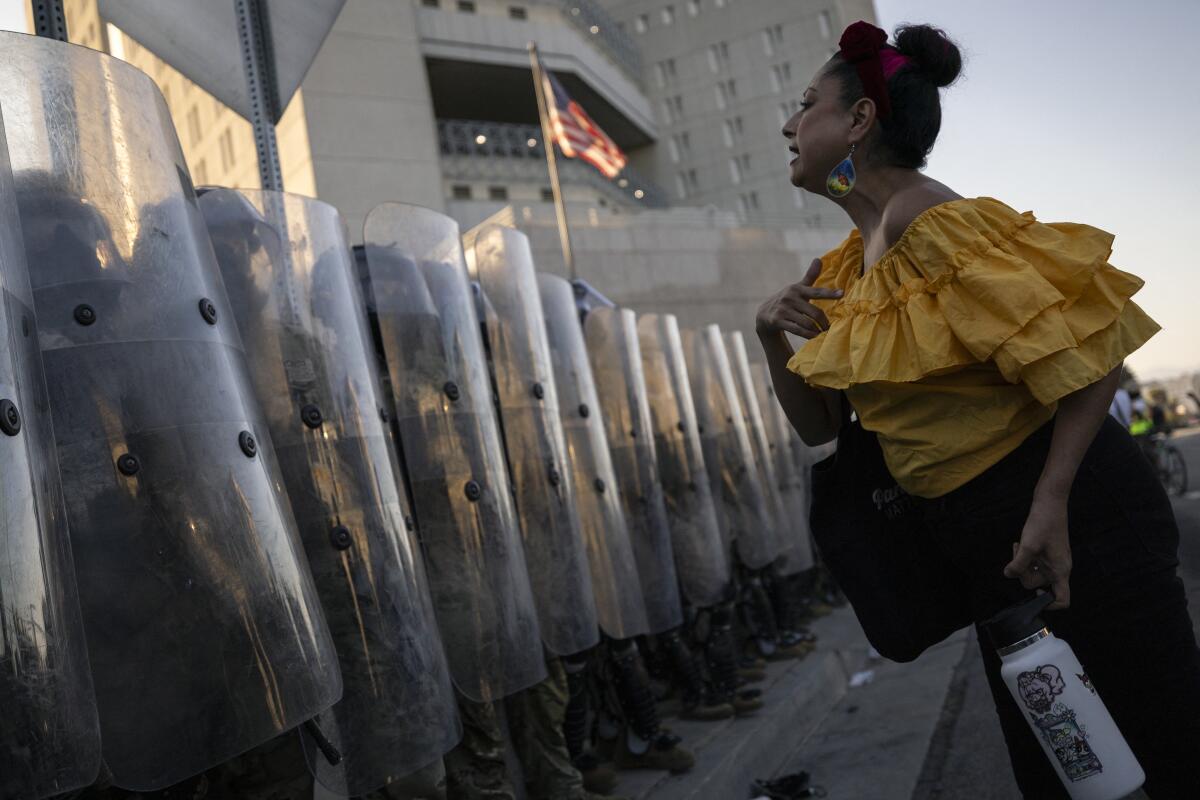Sen. Rand Paul (R-Ky.) delivered a nearly 13-hour filibuster Wednesday of John Brennan’s nomination to lead the CIA. Paul used his time on the floor to question the legality of the White House‘s policies on drone use, beginning at 11:47 a.m. EST and ending at 12:39 a.m. EST Thursday.
Below is the transcript of Paul’s remarks, as his office released them, hour by hour.
Hour 1:
I rise today to begin to filibuster John Brennan’s nomination for the CIA I will speak until I can no longer speak. I will speak as long as it takes, until the alarm is sounded from coast to coast that our Constitution is important, that your rights to trial by jury are precious, that no American should be killed by a drone on American soil without first being charged with a crime, without first being found to be guilty by a court. That Americans could be killed in a cafe in San Francisco or in a restaurant in Houston or at their home in bowling green, Kentucky, is an abomination. It is something that should not and cannot be tolerated in our country. I don’t rise to oppose John Brennan’s nomination simply for the person. I rise today for the principle.
The principle is one that as Americans we have fought long and hard for and to give up on that principle, to give up on the bill of rights, to give up on the Fifth Amendment protection that says that no person shall be held without due process, that no person shall be held for a capital offense without being indicted. This is a precious American tradition and something we should not give up on easily. They say Lewis Carroll is fiction. Alice never fell down a rabbit hole and the White Queen’s caustic judgments are not really a threat to your security. Or has America the beautiful become Alice’s wonderland? ‘No, no, said the queen. Sentence first; verdict afterwards. Stuff and nonsense, Alice said widely – loudly. The idea of having the sentence first? ‘Hold your tongue, said the queen, turning purple. I won’t, said Alice. Release the drones, said the Queen, as she shouted at the top of her voice.
Lewis Carroll is fiction, right? When I asked the President, can you kill an American on American soil, it should have been an easy answer. It’s an easy question. It should have been a resounding and unequivocal, “no.” The President’s response? He hasn’t killed anyone yet. We’re supposed to be comforted by that.
The President says, I haven’t killed anyone yet. He goes on to say, and I have no intention of killing Americans. But I might. Is that enough? Are we satisfied by that? Are we so complacent with our rights that we would allow a President to say he might kill Americans? But he will judge the circumstances, he will be the sole arbiter, he will be the sole decider, he will be the executioner in chief if he sees fit. Now, some would say he would never do this. Many people give the President the – you know, they give him consideration, they say he’s a good man. I’m not arguing he’s not. What I’m arguing is that the law is there and set in place for the day when angels don’t rule government. Madison said that the restraint on government was because government will not always be run by angels. This has nothing, absolutely nothing to do with whether the President is a Democrat or a Republican. Were this a Republican President, I’d be here saying exactly the same thing. No one person, no one politician should be allowed to judge the guilt, to charge an individual, to judge the guilt of an individual and to execute an individual. It goes against everything that we fundamentally believe in our country.
This isn’t even new to our country. There’s 800 years of English law that we found our tradition upon. We founded it upon the Magna Carta from 1215. We founded it upon Morgan from Glamorgan and 725 A.D. We founded upon the Greeks and Romans who had juries. It is not enough to charge someone to say that they are guilty.
Now, some might come to this floor and they might say, “Well, what if we’re being attacked on 9/11? What if there are planes flying at the Twin Towers?” Obviously, we repel them. We repel any attack on our country.
If there’s a gentleman or a woman with a grenade launcher attacking our buildings or our Capitol, we use lethal force. You don’t get due process if you’re involved with actively attacking us, our soldiers or our government. You don’t get due process if you’re overseas in a battle shooting at our soldiers. But that’s not what we’re talking about. The Wall Street Journal reported and said that the bulk of the drone attacks are signature attacks. They don’t even know the name of the person. A line or a caravan is going from a place where we think there are bad people to a place where we think they might commit harm and we kill the caravan, not the person. Is that the standard that we will now use in America? Will we use a standard for killing Americans to be that we thought – killing Americans to be that we thought you were bad, we thought you were coming from a meeting of bad people and you were in a line of traffic and so, therefore, you were fine for the killing? That is the standard we’re using overseas. Is that the standard we’re going to use here?
I will speak today until the President responds and says no, we won’t kill Americans in cafes; no, we won’t kill you at home in your bed at night; no, we won’t drop bombs on restaurants. Is that so hard? It’s amazing that the President will not respond. I’ve been asking this question for a month. It’s like pulling teeth to get the President to respond to anything. And I get no answer.
The President says he hasn’t done it yet and I’m to be comforted, you are to be comforted in your home, you are to be comforted in your restaurant, you are to be comforted on-line communicating in your e-mail that the President hasn’t killed an American yet on the homeland. He says he hasn’t done it yet. He says he has no intention to do so. Hayek said that nothing distinguishes arbitrary government from a government that is run by the whims of the people than the rule of law. The law’s an amazingly important thing, an amazingly important protection. And for us to give up on it so easily really doesn’t speak well of what our founding fathers fought for, what generation after generation of American soldiers have fought for, what soldiers are fighting for today when they go overseas to fight wars for us. It doesn’t speak well of what we’re doing here to protect the freedom at home when our soldiers are abroad fighting for us, that we say that our freedom’s not precious enough for one person to come down and say, enough’s enough, Mr. President. Come clean, come forward and say you will not kill Americans on American soil. The oath of office of the President says that he will, to the best of his ability, preserve, protect, and defend the Constitution. He raises his hand, his right hand, puts his left hand on the bible, and he says, “i will.” The President doesn’t say, “I intend to if it’s convenient.” “I intend to, unless circumstances dictate otherwise.” The President says, “I will defend the Constitution, I will protect the Constitution.” There isn’t room for equivocation here, Mr. President. This is something that is so important, so fundamental to our country that he needs to come forward. When Brennan, whose nomination I am opposing today, was asked directly, “is there any limit to your killing? Is there any geographic limitation to your drone strike program?” Brennan responded and said, no, there is no limitation. So the obvious question would be, if there’s no limitation to whom you can kill and where you can kill and there’s no due process upon whom you will kill, does that mean you will do it in America? So the Senator from Oregon asked him that question directly in committee. And this so-called champion of transparency, this so-called advocate of some kind of process responded to the senator from Oregon by saying, “I plan to optimize secrecy and optimize transparency.” Gobbledygook.
You wer will you kill Americans on American soil? Answer the question. Our laws forbid the CIA From doinghat. It should have been an easy question. The 1947 national security act says the CIA Doesn’t operate in our country. We have the FBI. We have rules. We have separated powers to protect your rights. That’s what government was organized to do. That’s what the Constitution was put in place to do. To protect your rights. So when asked, he says, no answer. He says, “I will evade your answer.” And by letting him come forward, we let him get away with it. So I have hounded and hounded and hounded, and finally yesterday I get a response from Mr. Brennan, who wishes to be the CIA Chief, and he finally says, I will obey the law. Well, hooray. Good for him. It took a month to get him to admit that he will obey the law. But it’s not so simple.
You see, the drone strike program is under the department of defense, so when the CIA Says they’re not going to kill you in America, they’re not saying the defense department won’t. So Eric Holder sent a response, the attorney general, and his response says, “haven’t killed anyone yet. I don’t intend to kill anyone but I might.” And he pulls out examples that really aren’t under consideration. There is the use of lethal force that can always be repelled. If our country is attacked, the President has the right to defend and protect the country. Nobody questions that. Nobody questions if planes are flying towards the Twin Towers whether they can be repulsed by the military. Nobody questions whether a terrorist with a rocket launcher or a grenade launcher is attacking us, whether they can be repelled. They don’t get their day in court. But if you are sitting in a cafeteria in Dearborn, Mich., if you happen to be an Arab-American who has a relative in the Middle East and you communicate with them by e-mail and somebody says, oh, your relative is someone we suspect of being associated with terrorism, is that enough to kill you? For goodness sakes, wouldn’t we try to arrest and come to the truth by having a jury and a presentation of the facts on both sides of the issue? See, the real problem here, one of the things we did a long time ago is we separated the police power from the judicial power. This was an incredibly important first step. We also prevented the military from acting in our country because we didn’t want to have a police state. One of the things that we greatly objected to at the British was they were passing out what were called general writs or writs of assistance. These were warrants that allowed them to go into a house but allowed them to go into anyone’s house. And so what we did when we wrote our Constitution is we – we made the Constitution, we made the fourth amendment specific to the person and the place and the things to be looked for. We didn’t like the soldiers going willy-nilly into any house and looking for anything. So we made our Constitution much more specific.
I think this is something we shouldn’t give up on so easily. I think that the idea that we can deprive someone of their life without any kind of hearing, essentially allowing a politician. I’m not casting any aspersions on the President. I’m not saying he is a bad person at all, but he is not a judge. He’s a politician. He was elected by a majority, but the majority doesn’t get to decide who we execute. We have a process for deciding this. We have courts for deciding this, to allow one man to accuse you in secret, you never get notified you have been accused. Your notification is the buzz of the propellers on the drone as it flies overhead in the seconds before you’re killed. Is that what we really want from our government? Are we so afraid of terrorism, are we so afraid of terrorists that we’re willing to just throw out our rights and our freedoms, things that have been fought for and that we have gotten over the centuries.
At least 800 years if not 1,000 years’ worth of protection. Originally, the protections were against a monarch. We feared a monarch. We didn’t like having a monarch. We came to this country, so when we set up our presidency, there was a great deal of alarm, there was a great deal of fear over having a king, and so we limited the executive branch. Madison wrote in the federalist papers, he said that the Constitution states what history demonstrates, that the executive branch is the branch most prone to war, most likely to go to war, and therefore we – we took that power to declare war and we vested it in the legislature. We broke up the powers. Montesquieu wrote about the checks and balances and the separation of powers. He was somebody who Jefferson looked towards. They separated the powers because there was a chance for abuse of power when power resides in one person. Montesquieu said there can be no liberty when you combine the executive and the legislative. I would say something similar. There can be no liberty when you combine the executive and the judiciary. That’s what we’re doing here. We’re allowing the President to be the accuser in secret and we’re allowing him to be the judge and we’re allowing him to be the jury. No man should have that power. We should fear that power. Not because we have to say oh, we fear the current President. It has nothing to do with who the President is. It has nothing to do with whether you’re a Republican or Democrat. It has to do with whether or not you fear the consolidation of power, were you – whether you fear power being given to one person, whether they are a Republican or a Democrat. This is not necessarily a right-left issue.
Kevin Gosztola who writes at FireDogLake, writes the mere fact that the President’s answer to this question, whether you can kill an American on American soil, that the President’s answer was yes is outrageous. However, it fits the framework for fighting a permanent global war on terrorism without any geographic limitations, which the present administration, President Obama’s administration has maintained that it has the authority to waive. What’s important here is that we’re talking about a war without geographic limitations, but we’re also talking about a war without temporal limitations. There is no limit, no limit in time to this war. When will this war end? It’s a war that has, I think, an infinite timeline. So if you’re going to suspend your rights, if there is going to be no geographic limits to killing, which really means we’re not at war in Afghanistan, we’re at war everywhere and everybody that pops up is called al-Qaida now, whether they have ever heard of al-Qaida or not, whether they have any communication with some kind of network of al-Qaida, everybody is al-Qaida, but there is a new war or an ongoing war everywhere in the world, there is no limitations.
Glenn Greenwald has written also about this subject, and he was speaking at the freedom to connect conference, and he says there is a theoretical framework being built that posits that the U.S. Government has unlimited power. Some caw this inherent power. Inherent means it isn’t – it hasn’t been defined anywhere, it hasn’t been expressly given to the government. They have just decided this is their power, they are going to grab it and take what they can get. This isn’t new. The Bush Administration did some of this, too. When the Bush Administration tried to grab power, though on the left and some of us on the right were critical. When they tried to wiretap phones without a warrant, we raised a ruckus. Many on the right and many on the left. There was a loud outcry against President Bush for usurping, going across due process, not allowing due process, not obeying the restraints of warrants. Where is that outcry now? Glenn Greenwald writes – “there is a theoretical framework being built that posits that the U.S. Government has unlimited power. When it comes to any kind of threats it perceives, it makes the judgment to take whatever action against them that it warrants without any constraints or limitations of any kind.” As Greenwald suggests – this is going back to Gosztola words, as Greenwald suggests, answering yes to the question that you can kill Americans on American soil illustrates the real radicalism that the government has embraced in terms of how it uses its own power. To think that we were opposed to them listening to your conversations without a warrant but no one’s going to stand up and say they can kill you without a warrant, a judge’s review or a jury, no one’s going to object to that, where is the cacophony that stood up and said how can you tap my phone without going to a judge first? I ask how can you kill someone without going to a judge or a jury?
Are we going to give up our rights to politicians, to any politician of any stripe, are we going to give up the right to decide who lives and who dies? Gosztola goes on to say that the reason the administration didn’t want to answer yes or no to this question of can you kill Americans on American soil is because he says that a no answer would jeopardize the critical theoretical foundation that they have very carefully constructed that says there are no cognizable constraints on how U.S. Government power can be asserted.
Civil libertarians once expected more from the President. In fact, it was one of the things that I liked about the President. I’m a Republican. I didn’t vote or support the President either time, but I admired him, particularly in 2007 when he ran. I admired his ability to stand up and say we won’t torture people, that’s not what America does. How does the President’s mind work, though? The President that seemed so honorable, seemed so concerned with our rights, seemed so concerned with the right not to have your phone be tapped now says he’s not concerned with whether you can be killed without a trial. The leap of logic is so fantastic as to boggle the mind. Where is the Barack Obama of 2007? Has the presidency so transformed him that he has forgotten his moorings, forgotten what he stood for? Civilian libertarians once expected more from the President. Ask any civil libertarian whether or not the President should have the right to arbitrarily kill Americans on American soil and the answer is easy. Of course, no President should have the right or that power under the Constitution.
Now, Brennan has responded in committee that the CIA Now does not have the right to do it on American soil. The problem is that this program is under the department of defense, so it’s once again an evasive answer, not answering the true question will the government of America kill Americans on American soil? Gosztola from FireDogLake writes there may never be a targeted killing of a U.S. citizen on U.S. soil and the question of whether a U.S. citizen could be targeted and killed on U.S. soil may remain a hypothetical question for some time, but the fact that the Obama Administration has told a U.S. Senator that there is a circumstance where the government could target and kill an American citizen on American soil without charge or without trial is a stark example of an imperial presidency. This is what our Founding Fathers wanted to fight against. They wanted to limit the role and the power of the President. They wanted to check the President’s power with the power of the Senate, with the power of the house, with the power of the judiciary. Three co-equal branches. Not one of them should be able to run roughshod on the other.
The problem has become is that we have allowed this to happen. Not me personally but Congress in general has allowed the President to usurp this power. If there were an ounce of courage in this body, I would be joined by many other senators saying that they will not tolerate this, that we will come together today in bipartisan fashion and tell the President, tell any President that no President will ever have the authority to kill Americans without a trial. Now, when the President says he doesn’t intend to do so, you really have to think that through.
The President a year ago lined up – signed a law that says that you can be detained indefinitely, that you can be sent from America to Guantanamo Bay without a trial, and he wants us to be comforted, he wants us to remember and think good of him because he says I don’t intend to do so. It’s not enough. I mean, would you tolerate a Republican who stood up and said well, I like the First Amendment, I’m quite fond of the First Amendment, and I don’t intend to break the First Amendment but I might. Would conservatives tolerate someone who said I like the Second Amendment? I think it’s important and I am for gun ownership and I don’t intend to violate the Second Amendment, but I might. Would we tolerate that he doesn’t intend to do so as a standard? We have to think about the standards being used overseas. The President finally admitted they interviewed him at Google not too long ago, they interviewed him and asked him can you kill Americans at home and he was evasive and he said but if there are rules, he said the rules would be different outside than inside. Well, I certainly hope so. Outside the United States, the rules for killing are you can kill someone through a signature strike. We don’t have to know what your name is, who you are, who you’re with. If you’re in a line of traffic and we think you’re going from talking to bad people to talking to other bad people, we’ll kill you. I mean, is that going to be the standard in America? Now, when they are questioned about ‘have you killed civilians in your drone strikes?’, they say no, but they don’t count you as a civilian if you’re a male or if you’re between the ages of 16 and 50, you’re a potential and a probable combatant if that’s your age range.
So my question is if you’re not a civilian, if you’re in proximity to bad people, is that the standard we’re going to use in the United States? So if we’re going to kill Americans on American soil and the standard is going to be signature strikes that you’re close to bad people or that you’re in the same proximity as bad people, would that be enough? Are we happy with that standard? Are we hap that we have no jury, no trial, no charges, nothing done publicly? In Eric Holder’s response, the attorney general’s response to me, they maintain they’re not going to do this, just trust them. It’s not really about them, know. It is about the law. The law restrains everyone equally, regardless of your party, whether you’re Republican or Democrat. The law is out there for the time when somebody inadvertently elects a really bad person.
You know, when World War II ended, the currency was being destroyed in Germany in 1923, the paper money became so worthless that people wheeled it in wheelbarrows. They burned it for fuel. It became virtually worthless overnight. The beginning of September 1923, the paper, I think it was like 10, 15 marks for a loaf of bread. September 14, it was a thousand marks. September 30, it was 100,000 marks. October 15, it was a couple of million marks for a loaf of bread.
It was a chaotic situation. Out of that chaos, Hitler was elected, Democratically. They elected him out of this chaos. The point isn’t that anybody in our country is Hitler. I am not accusing anybody of being that evil. It is a misused anology. In a democracy you could someday elect someone who is very evil. That’s why we don’t give the power to the government. And it’s not an accusation of this President or anybody in this body. It’s a point to be made historically that occasionally even a democracy gets it wrong. So when a democracy gets it wrong, you want the law to be there in place. You want this rule of law.
As I mentioned, Hayek said this is what distinguishes us. Heritage has an author who has written some about the oath of office. His name is Kesavin. He writes that the location and the phrasing of the oath of office for the President – this is something I explained earlier – that the President says he will protect and defend and preserve the Constitution. The oath is – you know, words are important. The oath doesn’t say, “i intend to preserve, protect, and defend.” It says “I will.” Kesavin writes that the location and phrasing of the oath of office strongly suggests that it is not empowering but limiting. So the President doesn’t take an oath of office that says, “I intend to preserve, protect, and defend the Constitution, but I also feel that I have inherent powers that were never mentioned by anybody that I will be the sole arbiter of interpreting what those powers are.” That sounds more like a king. That’s not what we wanted. We did not want a imperial presidency. What Kesavin suggests is that the oath of office is not empowering but that it is limiting, that the clause limits the President and how the President can execute or how the executive power can be exercised. One unanswered word in that Constitution includes the Fifth Amendment to the Constitution. What does the Fifth Amendment say? The Fifth Amendment says that no person shall be held to answer for a capital or otherwise infamous crime unless on presentment or indictment of a grand jury. It is pretty explicit.
The Fifth Amendment protects you, it protects from you a king placing you in the tower, but it also should protect from you a President that might kill you with a drone. We were granted due process. It’s not always easy to sort out the details of who is a threat to the country and who’s not a threat to the country. If it were people with grenade launchers on their shoulder, that’s easy. And in fact I agree completely … You don’t get due process if you’re actively attacking America. But you have to realize that there have been reports that over half of the drone strikes overseas are not even directed towards an individual; they are directed towards a caravan of unnamed individuals. You also have to realize that overseas I have no problems if people are shooting at American soldiers, by all means, they get no due process. But you also have to realize that many – we don’t know because they won’t tell us the number – but many of the drone strikes overseas are done when you’re walking – I don’t know where you are a walking … To church, you’re walking along the road – they’re done when you’re in a car driving, they’re done when you’re in a house eating. They’re done when you’re at a restaurant eating. They’re done when you’re in a house sleeping. I am saying that they’re not actively involved in something that’s an imminent threat and if they were in America, they would be arrested.
If we think you are a terrorist in America we should arrest you. But here’s the question: You who is a terrorist? That’s why I’ve been so concerned about a lot around here who say that if you’re associated with terrorism that your government has already put out things that I think are of questionable nature. The Bureau of Justice put out a bulletin within the last year describing people who you need to be worried about. These are the people that you’re supposed to say something. If you say something, you’re supposed to say something. Who are these terrorists that live among you?
People who might be missing fingers on one hand, people who might have stains on their clothing, people who might have changed the color of their hair, people who like to pay in cash, people who own more than one gun, people who own weatherized ammunition, people who have seven days of food in their house. These are people that you should be afraid of and that you should report to your government. So says your government. Are they going to be on the drone strike list? I think we need to get an answer from the President.
If you’re going to kill people in America, we need rules, and we need to know what your rules are. Because I certainly don’t want to have seven days of food in my house if that’s on the list to terrorism. Interestingly, on government websites there are some government websites that advise you to have it in your house. If you live in a hurricane-prone area you’re supposed to keep some area food around. Who is going to decide when it’s okay to have food in your house and when it’s not?
There’s something called fusion centers, something that are supposed to coordinate between the federal government, the local government to find terrorists. The one in Missouri a couple years ago came up with a list and they sent this to every policemen in Missouri. The people on the list might be me. The people on the list from the fusion center in Missouri that you need to be worried about, that policemen should stop, are people that have bumper stick theirs might be pro-life, who have bumper stickers that might be for more border security, people who support third-party candidates, people who might be in the Constitution party. Oooh, isn’t there some irony there.
You believe in the Constitution so much, you might be a terrorist – you believe in the Constitution so much, you might be a terrorist. We need to be concerned about this. Things are not so black and white. If someone is shooting at us, a canon, a missile, a rocket, a plane, it is pretty easy to know what lethal attacks are. We’re talking about people in their homes, at a restaurant, or a cafe that someone is making an accusation. If the accusation is based on how many fingers you have on your hand, I have got a problem with that standard. If the standard to be used for killing Americans is whether you pay in cash, I’ve got a problem with that. If the standard to be used in America is being close to someone who is bad or the government thinks is bad is enough for you to be killed and not even account you as an accidental kill, to count you as combatant because you were near them – see, here’s the problem, and this is no passing problem; this is an important problem.
There was a man named al-Awlaki. He was a bad guy, by all evidence available to the public that I’ve read, he was treasonous. I have no sympathy for his death. I still would have tried him in a federal court for treason and I think you could have been executed. But his son was 16 years old, had missed his dad, gone for two years. His son sneaks out of the house and goes to Yemen. His son is then killed by a drone strike. They won’t tell us if he was targeted. Suspect, since there were other people in the group, about 20 people killed, that they were targeting someone else. I don’t know that. I don’t have inside information on that. But I suspect that.
But here’s the real problem: When the President’s spokesman was asked about al-Awlaki’s son, you know what his response was? This I find particularly callous and particularly troubling. The President’s response to the killing of al-Awlaki’s son, he said he should have chosen more responsible father.
You know, it’s kind of hard to choose who your parents are. That’s sort of like saying to someone whose father is a thief or a murderer or a rapist, which is obviously a bad thing, but does that mean it’s okay to kill their children think of the standard we would have if our standard for killing people overseas is, you should have chosen a more responsible parent.
It just boggles the mind and really affects me to think that that would be our standard. There’s absolutely no excuse for the President not to come forward on this. I’ve been asking for a month for an answer. It’s like pulling teeth to get any answer from the President. Why is that? Because he doesn’t want to answer the question the way he should, as a good and moral and upstanding and someone who believes in the Constitution should; that absolutely no – no American should ever be killed in America who’s I thinking in a cafe. No American should ever be killed in their house without a warrant and some kind of aggressive behavior by them. To be bombed in your sleep? There’s nothing American about that. There’s nothing Constitutional about that. But he says trust him. He says he hasn’t done it yet. He says he doesn’t intend to do so, but he might. Mr. President, that’s not just good enough. That’s not enough – it’s not enough for me to be placated. It’s not enough for me to be quiet.
So I have a come here today to speak for as long as I can – I won’t be able to speak forever. But I’m going to speak as long as I can to draw attention to something that I find really disturbing. People ask about this nomination process, because I’ve actually voted for a couple of the President’s nominees, some of whom I’ve objected to coming of whom I’ve had personal as well as political differences. This is not about partisanship. I voted for the Secretary of State, John Kerry. I’ve almost nothing in common with him politically. I have disagreed with him repeatedly on the floor. But gave the President the prerogative of choosing his secretary of state, because I think the President won the election. He deserves to get to make some choices on who is in his cabinet. I voted for the very controversial Secretary of Defense Chuck Hagel. There were things liked about him, things I disliked about him. I filibustered him twice before I voted to let him go forward. And people in my party given me a hard time, conservatives from my party have blasted me for doing that. But I gave the President that prerogative. So I’m not standing down here as a Republican who will never vote for a Democrat. I voted for the first two – I voted for the first three nominees by the President. This is not about partisanship. I have allowed the President to pick his political appointees, but I will not sit quietly and let him shred the Constitution. I cannot sit at my desk quietly and let the President say he will kill Americans on American soil who are not actively attacking the country.
The answer should be so easy. I cannot imagine that he will not expressly come forward and say, no, I will not kill Americans on American soil.
The Fifth Amendment says that no person shall be held for a capital or otherwise infamous crime unless on the presentment or indictment of a grand jury. It goes on to say that no person will be deprived of life, liberty, or property without due process. Now, some hear “due process” – and if you’re not a lawyer, I am not a lawyer – when you first hear that you think, what does that mean? What does it mean to have due process? What it means is you’re protected. You get protections. Is our justice system perfect? No.
Sometimes you go all the way through due process in our country. We’ve actually convicted people innocent. Fortunately it’s very rare, but think about that. We’ve actually convicted people who are innocent.
What are the chances that the President going through PowerPoint slideshows and flash cards might make a mistake and innocent or guilty? I would say there is a chance. Even our judicial system, it goes through all of these processes with the judge reviewing the indictment, with a jury reviewing it, then with the sentencing phase, with all of that going forward, we sometimes make mistakes. What are the chances that one man, one politician, no matter what part they’re from, could make a mistake on this? I think there’s a real chance that that exists. That’s why we put these rules in place. Patrick Henry wrote that the Constitution wasn’t given or written or put down to restrain you. The Constitution was to restrain us. There’s always been, since the beginning of time, since we first had government, this desire to restrain the government, to try to keep the government from going too strong, to keep the government from taking your rights. It’s interesting when you look at the Constitution, the Constitution gave what are called enumerated powers to government, and Madison said that these enumerated powers few and defined. The liberties you were given, though, are numerous and enumerated. Unlimited. So it is about 17 powers given to government which we’ve now transformed into about a gazillion or at least a million new. We don’t pay much attention to the enumerated powers for the Constitution anymore. But the Constitution left your rights as unenumerated. Your rights are limitless. So when we get to the Ninth and Tenth Amendments, it says specifically that those rights not granted to your government are left to the states and the people respectively. It didn’t list what those rights are.
The 14th Amendment talks about privileges and immunities are left you to also. They’re to be protected. But I don’t think there is a person in America – that’s why I can’t understand the President’s unwillingness to say, he’s not going to kill noncombatants. Think about that. He’s unwilling to say publicly that he’s not going to kill noncombatants, because that’s what we’re talking about here. I’m not talking about someone with a bazooka a grenade launcher on their shoulder. Anyone committing lethal force can be repelled with lethal force. No one argues that point.
I’m talking about whether you can kill noncombatants, because many of the people being killed overseas are noncombatants. Are they potential combatants? Maybe. Maybe the standard can be a – less overseas than it is here for people involved in a battle, but it’s getting kind of murky overseas as well, but for goodness sakes in America, we can’t just sort of have this idea that we’re going to kill noncombatants. We’re talking about people eating in a cafe, at home, in a restaurant. I think we need to be a little more careful.
The power that was given by the Constitution to the Senate was that of advise and consent. This Constitutional provision provides us with the power to consent to nominations or withhold consent. It’s a check on the Executive Branch but it only works if we actually use it. I’m here today to speak for as long as I can hold up to try to rally support from people from both sides to say for goodness sakes, why don’t we use some advice and consent? Why don’t we advise the President that he should come forward and say he will not condone nor does he believe he has the authority to kill noncombatants? As a check on the Executive Branch, this power that’s granted is the right to withhold consent. The Constitution doesn’t provide Senators with the specifics or the criteria of why we withhold consent. That’s left to us to decide. I withhold my consent today because I’m deeply concerned that the executive branch has not provided an answer, that the President refuses to say that he won’t kill noncombatants. The President swore an oath to the Constitution. He said he will protect, defend and preserve the Constitution. He didn’t say I intend to when it’s convenient. He said I will defend the Constitution, and it’s inexcusable for him not to come forward.
There is an author that writes for The Atlantic who has written a lot about the drone program by the name of Connor Friedersdorf. He recounts the tale of al-Awlaki’s son who was killed, and he said when the President’s spokesman was asked about the strike that killed him, the President’s spokesman replied well, he would have been fine if he had had a more responsible father. If that’s our standard, we have sunk to a real low. Cornered by reporters after this, White House Press Secretary Robert Gibbs attempted to defend the kill list, which is secret, of course. You have to remember, if we’re going to kill noncombatants in America or people we think might someday be combatants, the list will be secret, so you won’t get a chance to protest hey, I’m not that bad. I might have said that one time, but I’m not that bad. All right. I have objected to big government, not all government. I don’t – I’m not fomenting revolution. I was critical at that meeting. I was at a tea party meeting and I was critical of the President, but I’m not a revolutionary. Please don’t kill me.
Should we live in a country where you have to be worried about what you say? Should we live in a country where you have to worry about what you write? What kind of country would that be? Why is there not more moral outrage? Why is there not every senator coming down to say you’re exactly right, let’s go ahead and hold this nomination, and why don’t we hold it until we get more clarification from the President? Connor Friedersdorf of The Atlantic writes that it’s vital for the uninitiated to understand how team Obama misleads when it talks about the drone program. Ask how their kill list can be justified, Gibbs, the President’s spokesman replies, when there are people who are trying to harm us and have pledged to bring terror to these shores, we have taken the fight to them.
But since the kill list itself is secret, there is no way to offer a specific counterexample. It’s one thing to say yeah, these people are going to probably come and attack us, which to tell you the truth is probably not always true. There are people fighting a civil war in Yemen who probably have no conception of ever coming to America. Friedersdorf goes on to say we do know the U.S. drones are targeting people who have never pledged to carry out attacks in the United States, so we’re talking about noncombatants who have never pledged to carry out attacks are being attacked overseas. Think about it, if that’s going to be the standard at home, people who have never really truly been involved with combat against us. Take Pakistan where the CIA kills some people without even knowing their identities. This is more from Friedersdorf. As Obama nears the end of his term, officials said the kill list in Pakistan has slipped to fewer than ten al-Qaida targets, down from as many as two dozen, and yet we’re killing hundreds of people in Pakistan.
There is a quote that I think sort of brings this and makes this very poignant. There is a quote from an ex-CIA Agent, I think it’s Bruce Riedel, who says the drone strike program is sort of like a lawnmower. You can keep mowing them down, but as soon as the lawnmower stops, the grass grows again. Some people have gone one step further and said for every one you kill or maybe for every one you accidentally kill that you didn’t intend to kill, 10 more spring up.
Think about it. If it were your family member and they have been killed and they were innocent or you believe them to be innocent, it’s going to – is it going to make you more or less likely to become involved with attacking the United States?
I have written a couple letters to John Brennan who has been put up for the CIA nomination. It looks like the first letter was sent January 25. So here we are into March and I only got a response when he was threatened. So here’s a guy who the President promotes as being transparent and wanting to give a lot of information to the American people, he won’t respond to a U.S. Senator. How do they – they treat the U.S. Senate with disdain, basically. Won’t even respond to us much less the American people when I asked him these questions. He finally responded only when his nomination was threatened, so when it came to the committee, and it appeared as I had bipartisan support for slowing down his nomination if he didn’t answer his questions, then he answered his questions. It doesn’t give me a lot of confidence that in the future going forward, if he is approved, that he is going to be real forthcoming and real transparent about this. I don’t have a lot of anticipation or belief that we’re going to get more information after this nomination hearing.
Some are now saying, you know, you have gotten your pound of flesh. Let him go and we’ll keep working on this. The problem is once he’s gone, the discussion’s over. Others in my party have been trying to get information about what went horribly wrong in Benghazi and have gotten some of that information, but only by using it as leverage to try to get the President to do what is the honorable thing, and that is to be more transparent with his ways. In the first letter that I sent to Brennan, I asked him the question is it legal to order the killing of American citizens and that you would not be compelled to even give your reasoning, not even specific to the case but any of your reasoning? So finally as these questions came forward, some of the things were leaked out.
One of the most troubling things that came out is when Brennan and the President finally began to talk about the drone strike program, which according to the former press secretary they were to deny that it existed for years, when they finally came out, they told us a couple of things about their interpretation of it. One, that they have no geographic limit to their drone strikes. The second thing is they told us what they thought was imminent. And this is pretty important because a lot of Americans, myself included, believe that if we’re being attacked, you can respond with lethal force, but a lot of Americans think that you have to actually be engaged in that to respond with lethal force, but they told us that the way their lawyers interpret imminent is imminent doesn’t have to mean immediate. Well, only a bunch of lawyers could get together, government lawyers get together and say that imminent is not immediate.
And you have to understand and what we should be asking the President is “is this your standard for America? If you are going to assert that you have the right to kill Americans on American soil, are you going to assert, are you going to assert that your standard is that an imminent threat doesn’t have to be immediate?”
I’m quite concerned when I hear this kind of evasiveness, that sort of nonresponse to questions. We also asked would it not be appropriate to require a judge or a court to review this? See, here’s the real interesting thing: We had a President who ran for office saying your phone shouldn’t n tapped without a warrant. – Shouldn’t be tapped without a warrant. I happen to agree with candidate Obama, but what happened to candidate Obama who wanted to protect your right to privacy of your phone who doesn’t care much about your right not to be killed by a drone without any kind of judicial proceeding? I think we should demand it.
The way things work around here, though, is people kind of say yes, we’ll demand it and maybe later on this year we’ll talk about a bill or talk about getting something. What they should do is just say no more, we’re not going to move forward until we get some justice. We’re not going to let the President, any President, Republican or Democrat, do this. One of the other questions I asked the President was it is paradoxical that the federal government would need to go before a judge to authorize a wiretap on U.S. citizens even overseas but possibly not have any kind of oversight of killing an American here in America. We have asked him how many citizens have been killed. We haven’t gotten an answer to that. They say not many, and hopefully it hasn’t been many, but I think it’s important to know. I think it would be important to know if we’re going to target Americans in America, if that list exists. I think it would be important to know if being close to someone is also justified. You know, just because you – what if you just happen to live in the neighborhood of somebody who is a suspected terrorist. Is it okay because you were close to them? What if you happened to go to dinner with a guy you didn’t know or a woman you didn’t know and the government says they’re a terrorist? Just because you’re having dinner with them and you are a male between the ages of 16 and 50, does that make you a combatant? We also asked the question do you condone the CIA’s practice of counting civilians killed by U.S. drone strikes as militants simply because they were of the same age? Like every other question, no answer. We asked him whether al-Awlaki’s son was a target. No answer. We asked how many people have been targeted. No answer. Part of the problem with this is that we are or Congress in general is sloppy about writing legislation in general. I will give you an example. When Obamacare legislation was written, it’s over 2,000 pages but it leaves up to the secretary of health I think 1,800 times the power to decide at a later date what the law or the rule would be. So since Obamacare of 2,000 pages has been written, there have been now 9,000 pages of regulations. Dodd-frank is kind of the same way. Dodd-Frank was a couple thousand pages. It’s now going to wind up with 8,000 or 9,000 pages of regulations.
We abdicate our responsibility by not really writing legislation. We write shells of legislation that are imprecise and don’t retain the power, and because of that, the executive branch and the bureaucracy, which is essentially the same thing, do whatever they want. This happened also with the use of authorization of force in Afghanistan. This happened over 10 years ago now, 12 years ago. I thought we were going to war against the people who attacked us, and I’m all for that. I would have voted for the war. I would have preferred it to have been a declaration of war.
I think we were united in saying let’s get those people who attacked us on 9/11 and make sure it never happens again. The problem is as this war has drug on, they take that authorization of use of force to mean pretty much anything. And so they have now said that the war has no geographic limitations, so it’s really not a war in Afghanistan, it’s a war in Yemen, Somalia, Mali. It’s a war in unlimited places. Were we a body that cared about our prerogative to declare war, we would take that power back. But I’ll tell you how poor – and this is on both sides of the aisle – how poor is our understanding or belief in retaining that power here? About a year ago, I tried to end the Iraq war. You may say, well, I thought the Iraq war was already over. It is, but we still have an authorization of use of force that says we can go to war in Iraq any time.
And since they think the use of force in Afghanistan means limitless war anywhere, any time in the whole world, for goodness sakes, wouldn’t we try to take back a declaration of war, an authorization of force if the war is over? But here’s the sad part. I actually got a vote on it and I think I got less than 20 votes. You can’t end a war after it’s over up here. And it has repercussions, because these authorizations to use force are used for many other things. So the authorization of force says you can go after al-Qaida or associated terrorists. The problem is, is that when you allow the Executive Branch to sort of determine what is al-Qaida, you’ve got no idea.
Hour 2:
You know, or how much – if there’s an al-Qaida presence there trying to organize and come and attack us. Maybe there is. But maybe there’s also people who are just fighting their local government.
How about Mali? I’m not sure in Mali they’re probably worried more about trying to get the next day’s food than coming over here to attack us. But we have to ask these questions and we have to ask about limitations on force because essentially what we have now is a war without geographic boundaries and we have many on my side who come down here and they say, oh, the battlefield’s here in America.
Be worried. Be alarmed. Alarm bells should go off when people tell you that the battlefield’s in America. Why? Because when the battlefield’s in America, we don’t have due process. What they’re talking about is they want the laws of war. Another way of putting that, they call it the laws of war. Another way to put it is to call it martial law. That’s what they want in the United States when they say the battlefield is here.
One of them, in fact, said if you – if you – if they ask for a lawyer, you tell them to shut up. Well, if that’s the standard we’re going to have in America, I’m – I’m quite concerned that the battlefield would be here and that the Constitution wouldn’t apply. Because, to tell you the truth, if you are shooting at us in Afghanistan, the Constitution doesn’t apply over there. But I certainly want it to apply here. If you’re engaged in combat overseas, you don’t get due process. But when people say, oh, the battlefield’s come to America and the battlefield’s every, where the war is limitless in time and scope, be worried, because your rights will not exist if you call America a battlefield for all time. We’ve asked him whether the strikes are exclusively focused on al-Qaida and what is the definition of being part of al-Qaida.
In 1947, the National Security Act was passed and it said the CIA doesn’t operate in America. Most people, most laypeople know that. The CIA is supposed to be doing surveillance and otherwise outside the U.S. of foreign threats. The FBI works within the United States. They do some of the same thing but they’re different groups. The CIA operating in Iraq or Afghanistan doesn’t get a warrant before they do whatever they do to snoop on our enemies. The FBI in our country does. They operate under different rules, and for a reason. So we don’t want them to operate in the United States.
It’s not that we’re saying the CIA are bad people, we just don’t want them operating with no rules or the rules we allow them to operate with overseas. We don’t want them operating that way in our country. The disappointing thing is that a month ago when I asked John Brennan this question, as his nomination came forward, is that I couldn’t get an answer. He would not answer the question about the CIA operating in the United States. Only after yanking his chain, browbeating him in committee, threatening not to let him out of committee, does he final sale he’s going to obey – finally say he’s going to obey the law. We should be alarmed by that. Alarm bells should go off when we find that what we’re – what is going on here is that it takes that much for him to say he’s going to obey the law.
Now, the President has said, don’t worry because he’s not going to kill you with a drone unless it’s infeasible to catch you. Now, that would – sounds kind of comforting, but I guess if our – if our standard for whether we kill you or not is whether it’s practical or not, that – that – that does bother me a little bit. Just doesn’t sound quite strict enough. Because I’m kind of worried that, you know, maybe there’s a sequester and the President says we can’t have tours of the White House.
Maybe he’s not got enough people to go arrest you. He had policemen by him and he said he was going to lay off the policemen. Of course, he doesn’t have anything to do with the policemen so don’t worry about that. But he had the policemen by him and says he’s going to lay them off. So maybe he’s going to lay the policemen off because he’s going to kill you.
I know that sounds like a slippery slope beyond what we’ve asked for, but if the standard is it’s infeasible to capture you and that’s what you’re hanging your hat on, I would be a little concerned that that might not be enough protection for Americans on American soil. Now, there is a law called posse comitatus. It says the military doesn’t operate on U.S. soil unless there’s a declaration of an insurrection or civil war.
There has to be a procedure that Congress goes through. And we’ve had this law for a long time. And once again, the reason we do it is not because we think our military are bad people. I’m proud of our soldiers, I’m proud of our army, I’m proud of what they do for our country. But they operate under different rules. And it’s a much more dangerous environment they operate under. And it’s different. It’s still dangerous in America, but policemen have a different rules of engagement than your soldiers have. And there’s – there’s more restrictions and restraint on what we do in our country. So that’s why we say the military can’t operate here. So when we asked the President, can you kill Americans on American soil with your drone strikes, which is part of the military, it should be an easy answer. In fact, I hope someone’s calling him now and asking him for an answer. It would save me a lot of time and breath, and my throat’s already dry and I just got started. But if they would ask him for an answer, can the military operate in the United States? Well, no. The law says the military can’t operate in the United States.
It’s on the books and he should simply do the honorable thing and say he will obey the law. It’s simple. But I don’t get why they refuse to answer it – Why they refuse to answer it. It worries me that they refuse to answer the question, because by refusing to answer it, I believe that they believe they have expansive power, unlimited power. The real irony of this is, is that many on the left, Senator Barack Obama included, were very critical of the Bush Administration. They felt like the Bush Administration usurped power. They felt like the Bush Administration argued invalid aggrandizement or grasping for power. John yew was one of the architects of this, basically just saying hey, if I’m going to protect you, I can do whatever the hell I want. Many on the left objected to that. Some of us on the right also objected to this – this usurpation of power by the Republican President. But the thing is, is it – now the shoe’s on the other foot and we’re not seeing any of that. We’re all of a sudden now seeing a President whose worried about wiretaps not at all worried about the legality of killing Americans on American soil with no judicial process. But the – the law of posse comitatus presents this from happening.
It’s very clear. It’s been on the books 150-some-odd years. I would think it would be pretty easy for the President to go ahead and say he will obey the law. We asked Brennan the question on this and we got no answer. The answers that we’ve gotten are almost more disturbing than getting an answer really, to tell you the truth. Because when the President responds that “I haven’t killed any Americans yet at home” and that “I don’t intend to do so but I might,” it’s – it’s incredibly alarming and really goes against his oath of office. He says in his oath of office that I will preserve, I will protect, and I will defend the Constitution. It doesn’t say I intend to or that I might. Can you imagine the furor if people were talking about the second amendment? Can you imagine what conservatives would say if a President said, well, yeah, I kind of like the second amendment and I intend to, when convenient, when it’s feasible, to protect the second amendment? Or what about those who believe in the First Amendment. If the President were to say, I haven’t broken the First Amendment yet, I intend to follow it, but I might break it? Or I intend to follow it when it’s feasible? So I have all these rules – and that’s what the President answered.
When he was at Google campus a couple weeks ago, they asked him the question, can you kill Americans on American soil? And he said, well, the rules will probably be different outside the U.S. Than inside, which basically means yes, he thinks he can kill Americans on American soil but he’s going to have some rules. Don’t worry about it because he will maybe some rules and there will be a process but it won’t be due process. It will be a process that he sets up in secret in the White House, and I – I – I don’t find that acceptable. The only answer really acceptable – you know, we asked a question that could be “yes” or “no.” Can you kill an American on American soil? It’s a yes or no question. They’ve been evasive and they have never really answered the question. But when we asked it, we pretty much knew only one answer was acceptable and that answer’s no. And if you don’t answer it, basically by not answering it, you’re saying yes. I was actually a little bit startled when I finally got the answer, “yes, we can kill Americans on American soil.”
I thought for sure that they would just be evasive to the end and try get their nominee through without opening Pandora’s Box. But they have opened Pandora’s Box and it would be a mistake to ignore it. It would be a mistake for us to ignore the ramifications of what they’ve done. When we separate out police power from judicial power, it’s an important separation. You know, the police can arrest you, they’re allowed to do certain things, but the policeman that comes to your door and puts handcuffs on you doesn’t decide your guilt. Now, sometimes we don’t always think about how important this separation is but it’s incredibly important that those arrests – who arrest you do not – they’re not even really the ones who ultimately accuse you. The court, through the people, accuse you and then you’ve given a trial to determine your guilt.
And it’s complicated. It isn’t always clear who’s innocent and who’s guilty. Judges and juries make mistakes. But at least we have a process, you get appeals most of the time. So we have a significant process going on that has a several hundred year tradition at the least. So what really gets me about the process that the President favors is, it’s sort of – it’s the “trust me” process.
You know, I have no intention of doing bad things, I will do good things, I’m a good person. And I’m not really disputing his motives or not saying he isn’t a good person. But I’m disputing someone who’s naive enough to think that that’s good enough for our republic, that his good intentions are good enough for our republic. It never would have been accepted, it would have been laughed out of the Constitutional Convention. The Founding Fathers would have objected so strenuously that that person probably would never have been elected to office in our country. Someone who doesn’t believe that the rules have to be in place and that we can’t have our rights guaranteed by the intentions of our politicians. Think about it. Congress has about a 10 percent approval rating. Do you think the American people want to base whether they’re going to be killed by a drone on a politician? I certainly don’t. Doesn’t have anything to do with whether he’s a Republican or a Democrat. I would be here today if this were a Republican President.
Because you can’t give that much power to one person. We separated the police power from the adjudication or from the jury power from the decisions on innocence and guilt, it’s separate from the police power purposefully so and with great forethought. Some transform this, and the President’s tried, Brennan has tried to transform this into, oh, well, we need to reserve this power for when planes are attacking the Twin Towers. Well, that’s not what we’re talking about, Mr. President, and I think you misunderstand or you purposely misunderstand or you purposely obfuscate or you purposely mislead. No one is questioning whether the U.S. can repel an attack. No one is questioning whether your local police can repel an attack. Anybody involved in lethal force, the legal doctrine in our country and has been historically, has always been that the government can repel lethal attacks. The problem is, is that the drone strike program is often not about combatants. It is about people who may or may not be conspiring but they’re not in combat.
They’re in a car, they’re in their house, they’re in a restaurant, they’re in a cafe. If we’re going to bring that standard to America, what I’m doing down here today is asking the President to be ex– is asking the President to be explicit. If you’re going to have the standard that you’re going to kill noncombatants in America, come forward and please say it clearly so we know what we’re up against. If you’re not going to do it, come up with the easy answer, is I’m not going to kill noncombatants. That would have been easy for him to say. And he could have said, well, the military at some point in time, you know, has to repel invasions.
We know that, Mr. President, we’re not questioning that. But we are questioning a drone strike program that – you know, we don’t know, because nobody will tell us the numbers – the numbers are secret – one Senator said in a public meeting the other day, 4,700 people have been killed overseas. If I had to venture a guess, a significant amount of them weren’t involved in shooting at American soldiers. But if they were, by all means, kill them. If we’re fighting a war in Afghanistan, which we have been, and if there are soldiers around the bend that are a threat to our soldiers, there is no due process at that point. But that’s not what we’re arguing about. We’re arguing about targeted strikes of people not involved in combat. That’s my concern. My co



